The Earl of Desmond and his kin hath of lands under him 120 miles, 400
horse, 8 bat of Gall, 1 bat of crossbow men and gunners, 3,000 kern. His country is long and
so environed, and hateth the Kinge’s lawes, so as they give none aid
– Dean of Lichfield1
The Dean of Lichfield’s observations during his sixteenth century excursions in Ireland reveal that the Earl of Desmond was a force to be reckoned with. Centuries have passed since the rule of Desmond yet their legacy in history, architecture, literature and art thrives.
The interest generated by Robert Maguire’s recent documentary, ‘The Castle of the Island’ – which contains aerial footage of the ruined Castleisland Castle – testifies to an ongoing love affair with Desmond’s eventful history.2
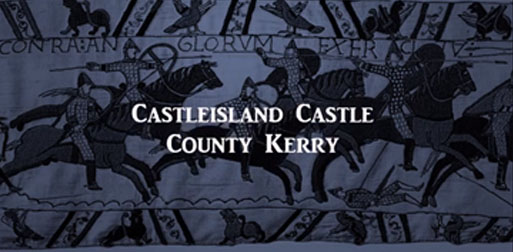
Folklore is a wonderful guardian of history and the Earls of Desmond ably fill their place in it. John Fitzgerald, 1st Baron Desmond, who founded Tralee, built Tralee Castle and fought along with his son Maurice at the Battle of Callan, will forever be remembered in the legend of an Apa – the ape – because in this tale his grandson Thomas, father of Maurice, the 1st Earl of Desmond, was rescued from his cradle by such a creature.3
A legend peculiar to Castleisland tells of Gearóid Iarla, otherwise Gerald, 3rd Earl of Desmond, a fourteenth century poet and magician who metamorphosed into a goose and disappeared down the turbulent river Maine, never to be seen again.4
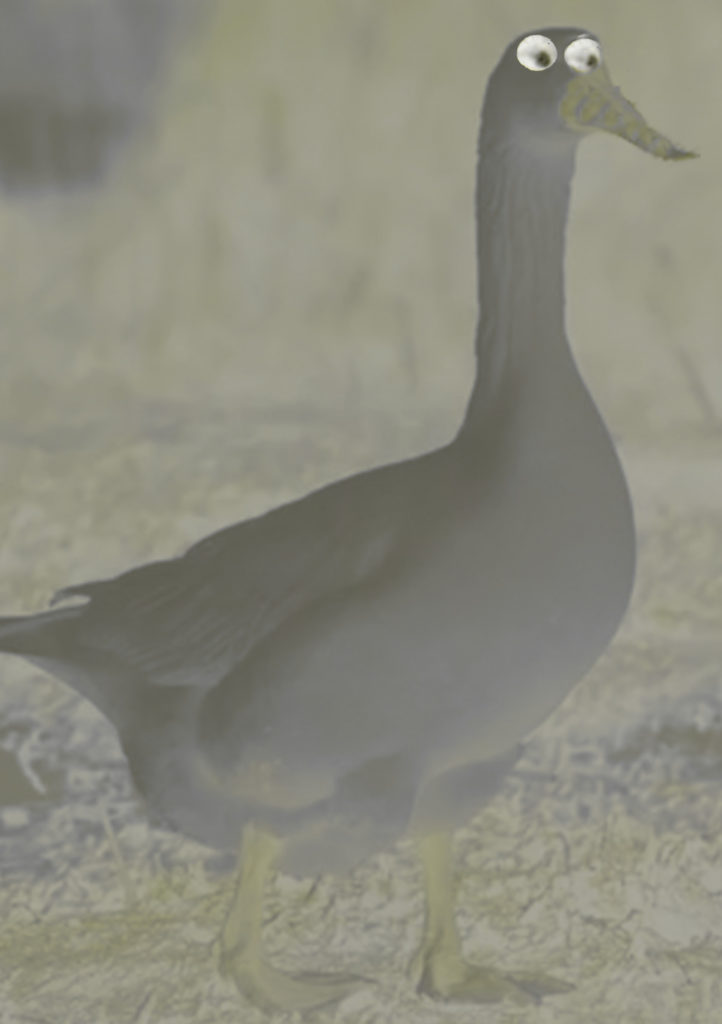
Indeed, Gearóid Iarla or Gerald the Earl also appears in the folklore of Co Louth, a far cry from his southern home of Desmond. A legend there associates Gerald with a fort at Hacklim, not far from the famous Jumping Church, and relates how he and his warriors are held on their horses in a state of enchantment, awaiting the day when they can arise once again.
The mysterious displacement of Gearoid Iarla in this legend was explained as a product of the fame of the accomplished earl. His renown was such that he was launched into the pantheon of enchanted heroes and assumed a symbolism all of his own.5
Fall from a Cherry Tree
Perhaps the most legendary of Desmond characters is the old Countess of Desmond who was said to have lived to the age of 140 and died as a result of a fall while picking cherries from a tree.6
Her husband, Thomas, 11th Earl of Desmond (1454-1534) finds his history attached to the legend of Mogeely Castle, a principal seat of the Desmond family two miles west of Tallow where on the banks of the Bride stand the ruins of several Desmond castles.7
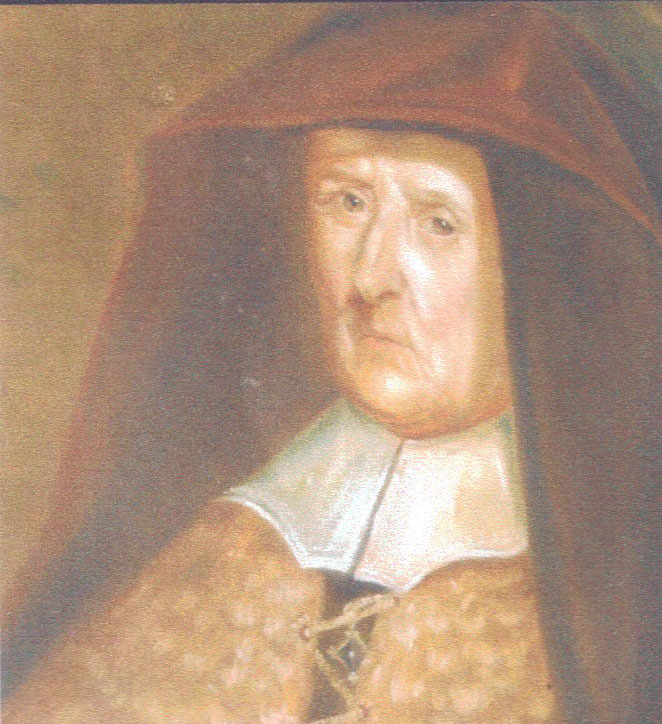
Thomas had a favoured steward who took great liberties with his lord. Unknown to him, the steward invited a great number of chiefs of Munster to spend a month at Mogeely Castle, a place later associated with Sir Walter Raleigh. As the guests flocked in – to the greatest surprise of Desmond – it became apparent there were insufficient provisions for such a number. After a few days, the domestics informed the earl they could not furnish dinner the next day.
The following morning, the earl invited all his guests to hunt with him and and rather than dishonour them by his circumstances, ordered his servants to set ‘accidental’ fire to the castle in his absence. As the earl hunted, he every moment expected to see Mogeely in flames. His steward meanwhile, who had been absent, returned with corn and cattle sufficient to keep the guests for some months and just in time to save the castle from going up in flames.8
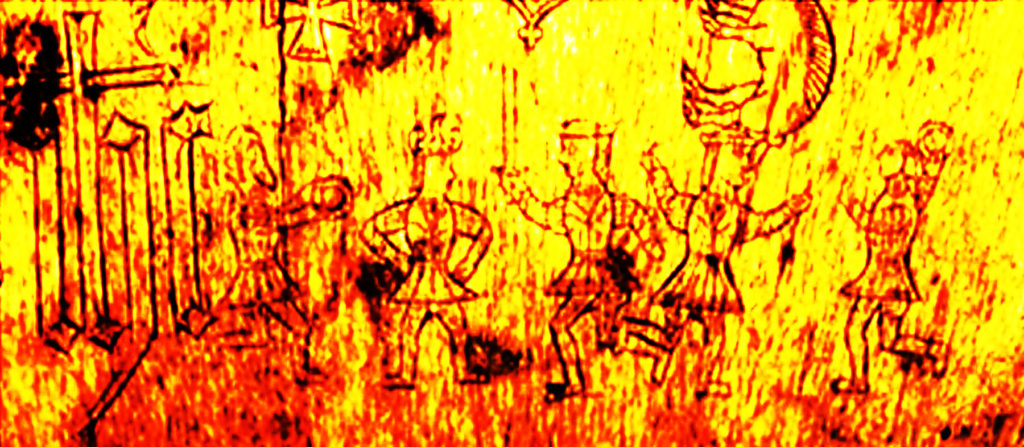
By the Feal’s wave benighted,
No star in the skies,
To thy door by Love lighted,
I first saw those eyes.
Some voice whisper’d o’er me,
As the threshold I cross’d,
There was ruin before me,
If I loved, I was lost.9
Moore’s lines above record another legend of the Fitzgerald family in the love affair of Thomas Fitzgerald, 5th Earl of Desmond and Catherine McCormac of Abbeyfeale. Thomas succeeded to the earldom in 1399 and when still a boy, was exposed to the plots of his unscrupulous uncle James.
One day while hunting, Thomas took shelter in the house of the family McCormac and fell hopelessly in love with Catherine, the lovely daughter of the house. The result was the marriage of lord and vassal and it followed that Thomas, under the wrath of his family, had to flee with his bride to France, surrendering his title and territories to his uncle. He died in Rouen in 1420.
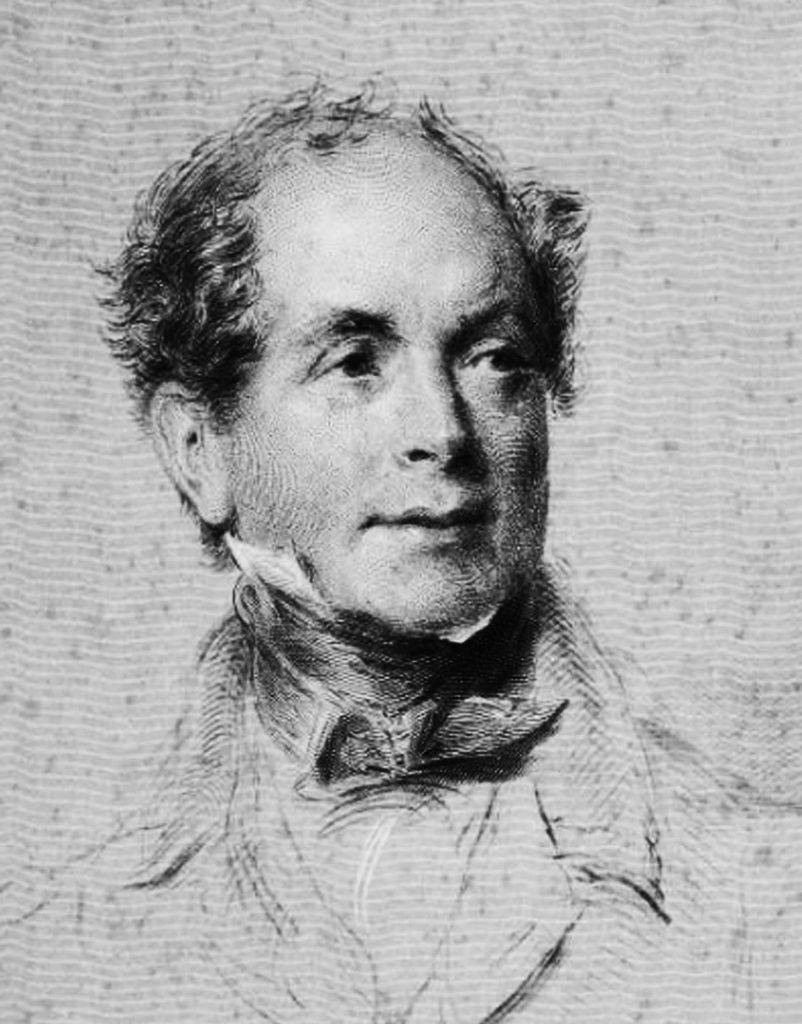
A similar legend is told of the romance and flight of Fitzgerald and Eva O’Connor of Castleisland’s Kilmurry Castle and Ballymacadam Castle, though Moore was not on hand to gracefully express their plight.10
The legend of Castle Desmond was the inspiration for a two-act play, An Irish Colleen, produced in 1906. In this tale, the Lord of Desmond wooed an Irish peasant girl but, while attempting to foil a plot by a rival lover to murder him, she was slain for refusing to disclose his whereabouts. ‘And so when the banshee wailed it foretold impending woe to the head of the house of Desmond’.11
Where art thou, genius?
– Ode to James, Earl of Desmond
It may be said that with the head of Gerald, 15th Earl, slain in 1583, came the fall of the House of Desmond.12
Gerald was the Rebel Earl, Ingens Rebellibus Exemplar. It was said that the place where he was killed, Bóthar an Iarla, was still red with blood long after he had died. 13
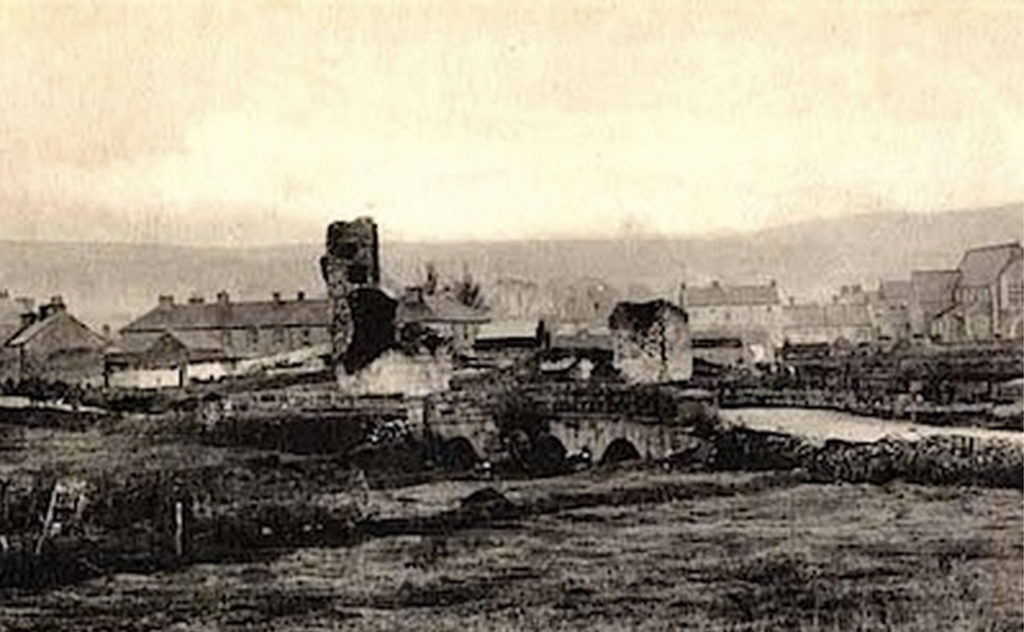
There is a poetic legend that the troubled soul of Gerald can be seen walking in his shroud when the sky is ‘wrapt in cloud’ and the wind pipes ‘through chink and hole’. It tells how on one such night in the years approaching the Famine, the ghost of Gerald rode from the hills of Ardnagragh and appeared to a lone blacksmith with a dire warning. He instructed the blacksmith to make haste, and speed him on his way to Iveragh, for there he had ‘to herald an approaching scourge’.
As the smithy took hold of the horse’s hoof, he found it was a limb of air. The knight then gave warning of the coming plague:
The curse of Cromwell shall seem light, And light that scourge, Elizabeth, Compared with this impending blight. And in its train, Disease and Death.
The smithy later recounted this ghostly episode to his neighbours but was derided, and many hinted that his vision was ‘Usquebagh’, yet:
He stoutly swore, and still would swear it, ‘Twas Desmond’s ghost from Ardnagragh; None other than that wounded spirit – The scar across his throat he saw.14
_______________
1 From the dictionary of Lawrence Nowel (c1515-1576), Dean of Lichfield, written in the early to mid-sixteenth century. Published in The Irish Ecclesiastical Record, ‘Abbreviate of the Getting of Ireland, and of the Decay of the same’ by Rev Edmund Hogan, SJ, Vol IX (1888), pp629-641. Also published in Report of Desmond in History of Ireland as Disclosed by Irish Statutes passed by Irish Parliaments between 1310 and 1800 (1892)by Miss A M Rowan of Tralee, Co Kerry, ‘Desmond’, p12. 2 The film was screened at the River Island Hotel on 21 April 2018. It records that from 1231-1583, a total of 16 men held the hereditary title of Earl of Desmond. Further reference, www.castleislandcastle.com. 3 For the tale in full, see ‘The Earl, the Monkey and the Battle of Callan A Legend of Thomas an Apa FitzGerald, father of the First Earl of Desmond’ in The Legend of Lough Brin and other Irish legends (2017), pp39-42. 4 He was earlier designated the 4thearl before revised ranking. The Legend of the Castleisland Goose A tale of Gerald the Poet, 4th Earl of Desmond, was published in 2015. 5 ‘The Legend of Gearóid Iarla of Hacklim’ by Rev Dermot MacIvor, Journal of the County Louth Archaeological Society, Vol 14, No 2 (1958), pp68-81. Rev MacIvor argued that ‘from a mere figure of faery, Gerald became a saviour whom men looked to for their country’s deliverance’. He dismissed however, the Earl of Desmond as the subject of this particular legend, ‘We may, I think, safely discard the notion that Gearóid of Desmond himself was the prototype of our hero. Desmond is far away at the other end of the country, and history knows of no special connection of that family with mid-Louth’. 6 A portrait purportedly that of the countess hangs in Muckross House, Killarney, where visitors are entertained with the above tale. The portrait is inscribed, ‘Catherine Countesse of Desmond as she appeared at y: Court of our Sovraige Lord King James in this present AD 1614 and in y: 140th of her Age. Thither she came from Bristol to seek relief House of Desmonde having been ruined by Attainder. She was married in y: Reigne of King Edward IV and in y:Course of her long pilgrimage renewed her teeth twice. Her principal residence is at Inchiquin in Munster whither she undauntedly proposeth (her purpose accomplished) incontinen there to return. LAVSDEO.’ Further reference, The Last Earl of Desmond: A Historical Romance of 1599-1603 (1854) in two volumes by Rev Charles Bernard Gibson and The Olde Countesse of Desmonde, her identitie, her portraiture, her descente by Rev A B Rowan (1860). See also the appendix of As Wicked a Woman, The Biography of Eleanor Countess of Desmond c1545-1638 (1997) by Anne Chambers, ‘The ‘Old’ Countess of Desmond’, pp233-235 which contains a synthesis of the various records about the countess. 7 The site of Mogeely Castle, near the village of Curraglass, Conna, was excavated in 1991. See report 1991:027 at excavations.ie. 8 Charles Smith’s The Ancient and Present State of the County and City of Cork, Vol I, p151. 9 Desmond's Song by Thomas Moore (1779-1852). It is thought to have been composed at the time of Moore’s visit to Kilmeany (Kilmorna) House in Listowel. 10 Fitzgerald of Kerry A 17th century tale of Kilmurry Castle and Ballymacadam Castle (2018). 11 A synopsis of the play and cast was published in The Stage, 17 May 1906. The play was written by playwright Catherine Maude Dawson-Smith who also produced and performed in the productions which took place in Nash school during the period 1898 to 1914. She wrote under the pen-name Katie M Luck (her maiden name) and among her titles, Love and Folly (1898), A Gipsy Maid (1900), Hearts of Diamonds (1900), A Veiled Queen (1903), A Midsummer Madness (1903), When Nancie Came (1904), My Lady Dolores (1905), An Irish Colleen (1906), O Mistress Mine (1907), The Sea Witch (1908), The Grass Widow (1909), Fate and Fenella (1910), The Spider’s Web (1911), Concerning Lalage West (1912) ,The Moon Lady (1913) and Daphne Enjoys Herself (1914). She also wrote short stories and poetry which were published in her local press. Mrs Catherine Maude Dawson-Smith was married to Rev Charles Clare Dawson-Smith, 38 years the rector of Nash, Stony Stratford, Buckinghamshire until his death at Mursley Nursing Home in December 1935, aged 74. Mr Nash was a Freemason, a member of the Watling Street Lodge and held Provincial Grand Lodge and Grand Lodge Rank. He was Assistant Grand Chaplain of the Masonic Grand Lodge of England and Past Grand Chaplain for the Province of Buckinghamshire. He was the author of Original Patent Application Number 25,939 for Improvements in Explosives for Shot and Other Guns (1905). Mr and Mrs Dawson-Smith had two children, Frank, 5th Battalion Buckinghamshire Light Infantry, King’s African Rifles, who died on 11 January 1920 aged 33 in Somaliland after being murdered when his platoon at Kar, Northern Jubaland, consisting of Somalis, mutinied. His body was exhumed from the Abyssinian Frontier and reinterred in consecrated ground at the military station at Wajir Cemetery, Kenya, nine years later. Mrs Dawson-Smith’s daughter Kate (Madge) (1888-1982) served as Assistant Administrator, Queen Mary’s Army Auxiliary Corps. Catherine Maude Dawson-Smith in 1946. Her death was registered in Lothingland, Suffolk. 12 Gerald had a son, James, known as the Tower Earl or the Queen’s Earl, to whom poet Ben Jonson addressed his Desmond Ode. James was born in 1571 and incarcerated in Dublin Castle 1579-1584 and the Tower of London until 1600. In that year, on 14 October, he was sent to Ireland but was rejected by the Catholics when he went to Divine Service in Kilmallock parish church. He returned to England and died there on 12 November 1601, evidently from poison (see Desmond letters in A Calendar of Manuscript Material relating to Ireland, 1580–1602 https://celt.ucc.ie//published/E580000-002/index.html). His date of death was recorded in the Papers of the Winthrop Family, Vol 1, Adam Winthrop (1548-1623) – reference Massachusetts Historical Society. 13 Gerald’s brother John escaped to Spain where he was distinguished as Earl or Count of Desmond which title was also given to his son, Gerald, who died in the service of a foreign court, without issue, about the year 1632. Gerald’s near relation James, the ‘Sugan Earl’ (Earl of Straw) was described as one of the handsomest men of his time. He was tried as a traitor in 1601 and sent to the Tower of London where he died a prisoner in about 1608 and was buried in the chapel. He was three times married but left no descendants. A play about his life, Earl of Straw by Christine Pakenham, Countess of Longford (1900-1980) was staged in Dublin in 1944. 14 ‘A Legend of Desmond’, 16 stanzas, Kerry Evening Post, 16 September 1848. There are many accounts of Gerald’s last years and his capture and death, including that given in Researches in the South of Ireland (1824) by Thomas Crofton Croker, Ch IV ‘Kilmallock’, pp68-77.


